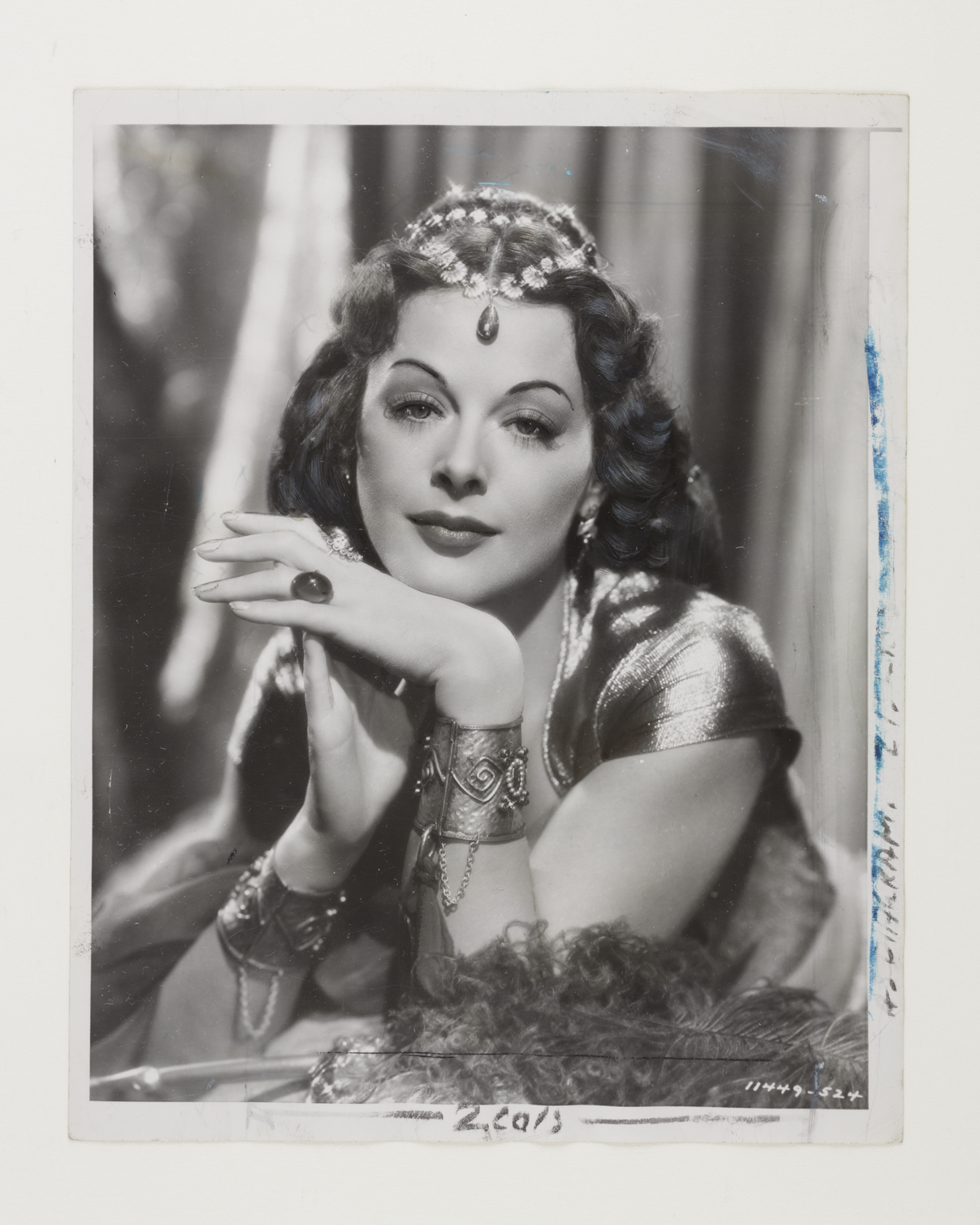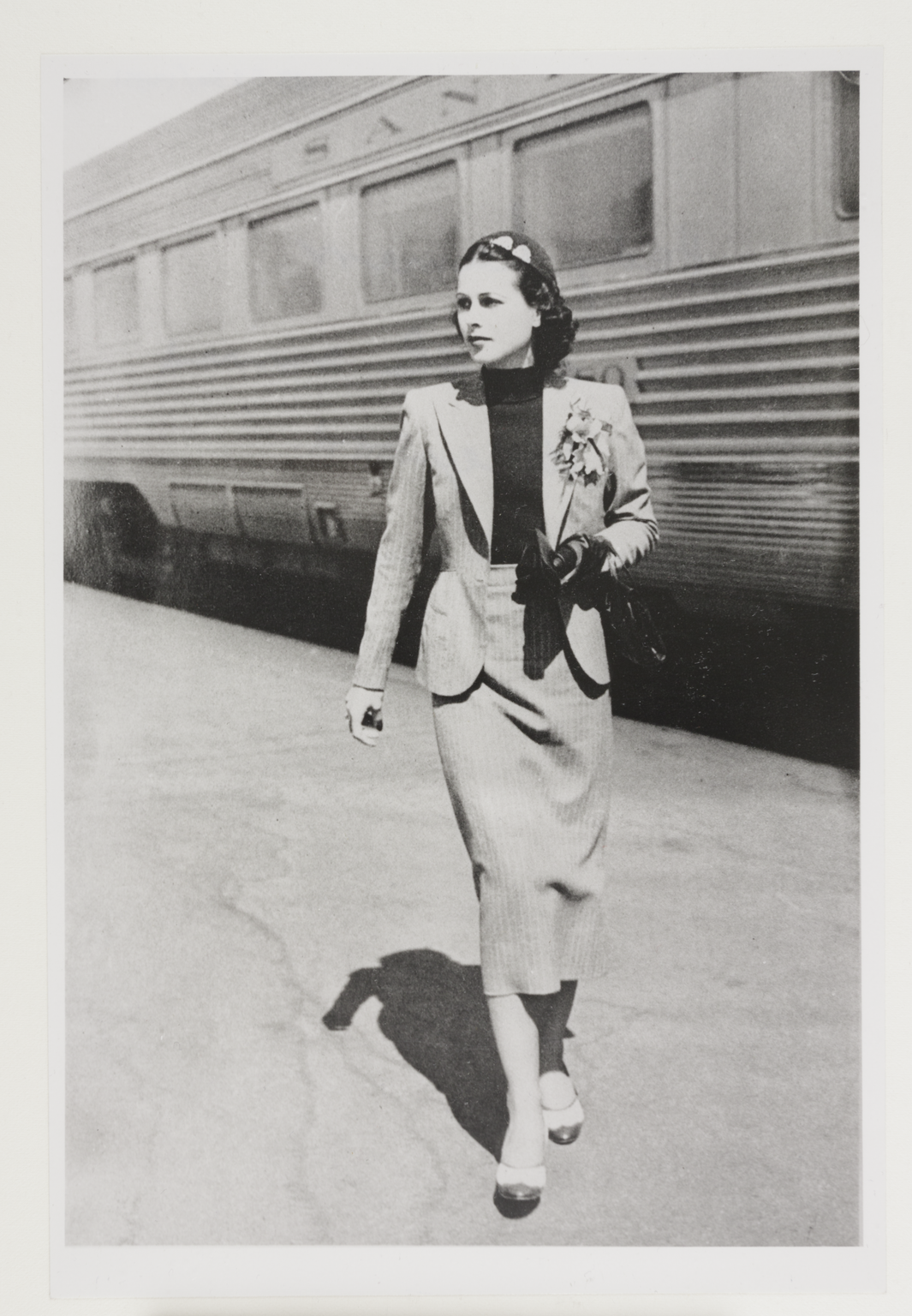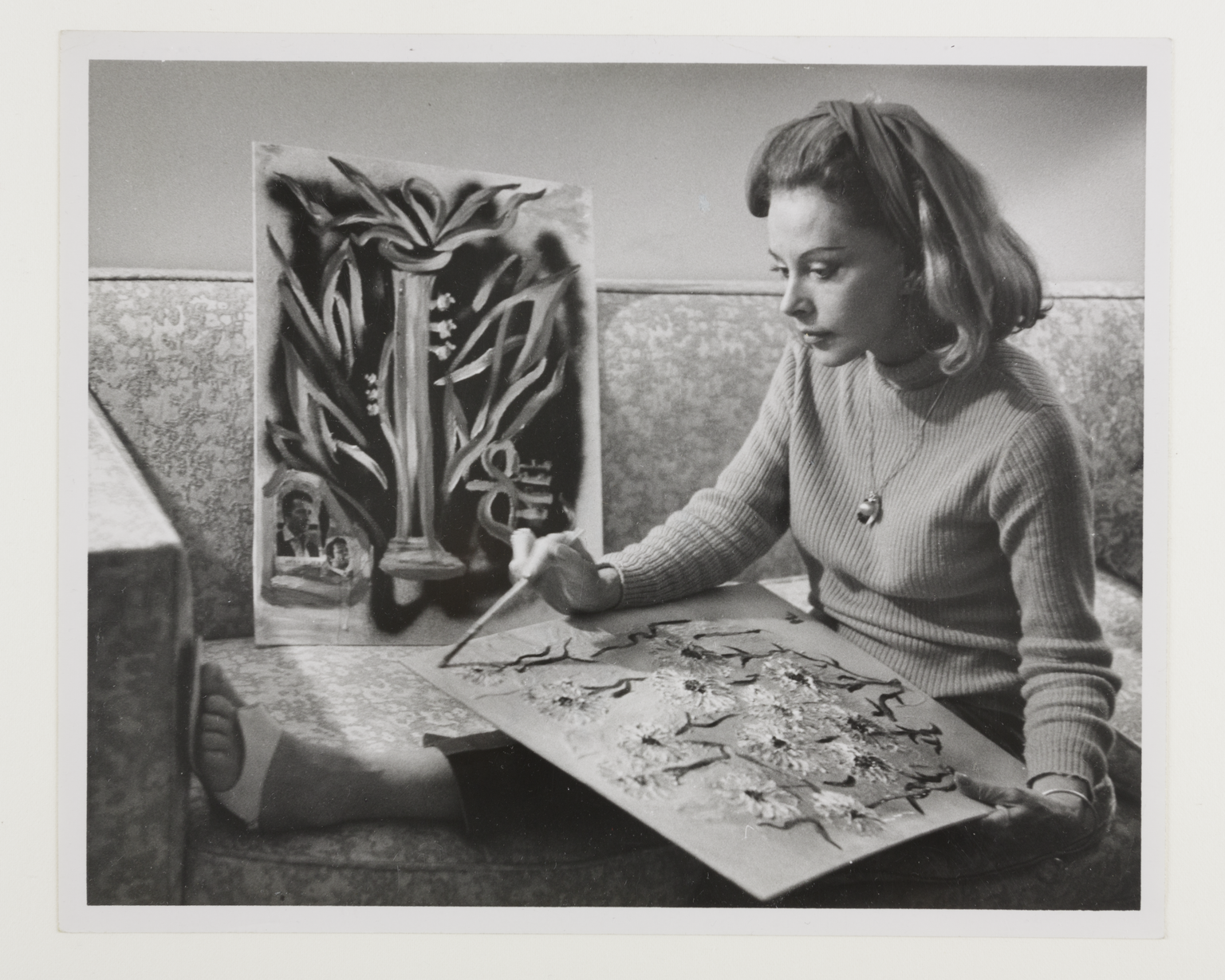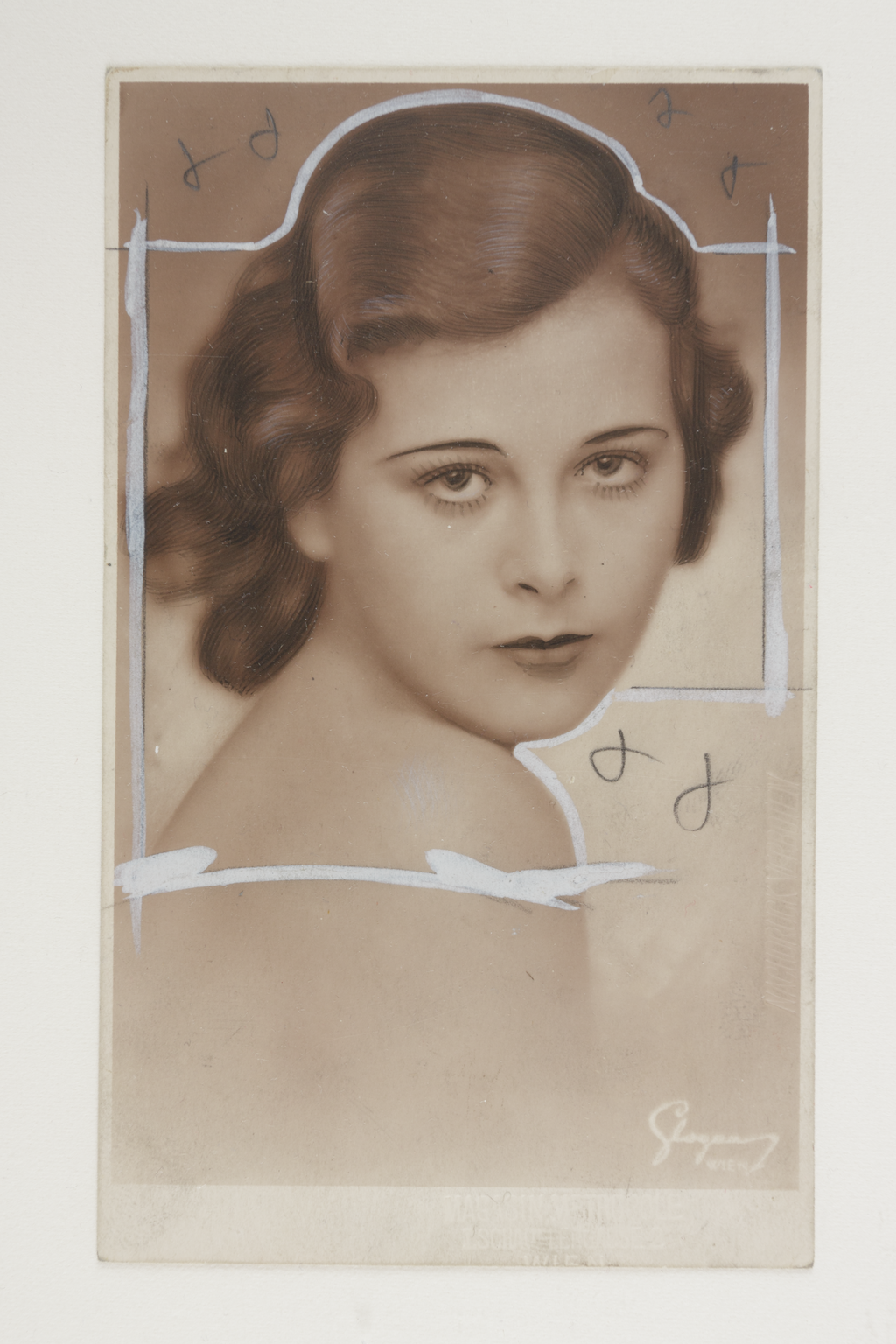So often throughout history the scientific achievements of women have been forgotten; ignored, overshadowed and sometimes outright stolen by their male peers. For this series, Collections Assistant Kendra Bean delves into the museum’s collections in search of female trailblazers in science, technology, engineering and maths.

Hedy Lamarr was one of the most beautiful women to ever grace the silver screen. Born Hedwig Eva Maria Kiesler in Vienna in 1914, she shot to fame in Europe by appearing nude in the Austrian-Czech film Ecstasy (1933). An unhappy marriage to fascist armaments manufacturer Fritz Mandl ended in 1938 when Hedy gathered her jewels, left a dinner party, and fled to Paris. There she was discovered by Metro-Goldwyn-Mayer producer Louis B. Mayer and offered a Hollywood contract.

Over the next 20 years Hedy left her mark on film history by playing a succession of glamorous, sensual characters in films like Algiers (1938), Boom Town (1940), White Cargo (1942), and Samson and Delilah (1949). In her private life Hedy enjoyed painting, collecting art, people-watching at Hollywood parties and—most surprising to those who knew her only as a sex symbol—inventing.

Hedy’s beautiful image concealed an interest in engineering and an intellect as sharp as a tack. ‘Hedy invented as a hobby,’ writes her biographer Richard Rhodes.
‘Since she made two or three movies a year, each one taking about a month to shoot, she had spare time to fill… When she was a girl, her father, a Viennese banker, had encouraged her interest in how the world worked, taking walks with her and explaining the mechanics of the machinery they encountered… She also had a keen sense of the world’s large and small failings, some of which she decided she could fix. In Hollywood she set up an inventor’s corner in the drawing room of her house, complete with a drafting table and lamp and all the necessary drafting tools.’
When the United States entered WWII, Hedy endeavoured to help her adopted country in the fight against the Nazis. Together with her friend, the composer George Antheil, Hedy began work on a ‘Secret Communication System’ that relied on frequency-hopping (spread-spectrum technology) to unpredictably interchange the transmission of carrier waves. Using perforated records from player pianos, the idea was that the device could be used to remotely control torpedoes without the risk of interception and jamming by enemy forces.
Hedy and George were awarded US Patent 22923878 in August 1942, and they immediately offered up the Communication System for governmental use. Unfortunately, the US Navy dismissed the invention as being too complicated to implement, and at the time they did not want to use inventions made by non-military personnel.
The patent expired after the war without Hedy’s knowledge and was ironically rediscovered during the Cuban Missile Crisis in the early 1960s. It has since been cited over 60 times.
Hedy could not have predicted the significance of her ideas at the time. She kept mum about her activities in the realm of science and technology; there is no mention of it in her 1966 autobiography, Ecstasy and Me. Neither is there any indication of it in the Daily Herald Archive, from which the images in this blog post were sourced. According to her obituary in the Los Angeles Times:
‘Lamarr never tried to promote her invention, considering it merely her contribution to the war effort.’
Spread-spectrum technology is still heavily in use by the military today and has had a major impact on the way we live our lives in a hyper-connected world. Thanks to Hedy Lamarr, we now enjoy Wi-Fi and GPS.
Neither Hedy nor George Antheil ever received a penny for the use of their invention.

It was only in the last decade of her life that the brains behind Hedy Lamarr’s beauty were revealed for the world to see. And even then, people had a hard time believing her intelligence was genuine. To quote Bombshell director Alexandra Dean:
‘I think it took a while for the world to catch up with Hedy Lamarr. I can say with confidence that she was 100 years ahead of her time.’
It’s nice to see this remarkable inventor finally getting the credit she deserves. I have a feeling she will prove an inspiration to many young girls from here on out.
What a great post and choice of images from the Daily Herald archive full of rare and lost images ..am very interested in the image for Metropole magazine ..there is a photographer credit in bottom right corner which I can’t decipher ..someone who had a studio in Vienna ( Wien)..am collecting and researching photographers based there then..please share identity if you can make out name
Hi Terence,
Many thanks for the comment and I’m glad you enjoyed the post. I tried to make out the photographer’s name on the Metropole postcard but it’s quite blurry and illegible. I tried a few Google search guesses but no luck so far.
Love this and excited about this series! I’m so glad that in recent years more and more people are uncovering the immense contributions women have made to STEM fields throughout history. So many women were overlooked either because they worked with their husbands or were never taken seriously. I remember a podcast once telling a story of a woman who married a man in the late 1700s so she could have access to his telescope and she discovered a number of comets, which he then claimed as his. Just imagine what we could have done with open access to libraries and tools over the last few centuries. Looking forward to the rest of this – I’m so glad you’re writing about amazing women!
Thank you so much, Katy! I’m excited to dig up more stories about amazing women in our archive.
Katy, the actual person you’re thinking of is Caroline Herschel, but she didn’t behave quite in the way you heard! She was the sister of Sir William Herschel (born in Germany but became British) and worked as his assistant for many years. She became an astronomer in her own right and discovered several comets, for which she was awarded recognition. Given the view of women at the time (late 18th to early/mid 19th cents) I think one has to say this was pretty enlightened for the crusty old scientific establishment. I believe she was the first woman to be elected to the Royal Society.
Super sleuthing! Loved reading this, Kendra, and can’t wait for more in this series.
I loved it soo much!
Hi, thanks for the article, but I cannot help myself and put forward this thought: is it really that simple as you put it? Why did she not promote her inventions and what exactly was it that she did? Did you really dig into the patent and explore what exactly it was, was it any good? Wast it new? I am fascinated by the personality of Hedy Lamarr, do not take me wrong, and exactly for that reason I read so much about her – her autobiography, other books and also so many articles. The short and quick ones say that she helped develop wifi and GPS and other stuff in the way, but longer ones very often remark, that she actually did not do it and that it is more about really wanting so much for this beautiful actress to be also so inteligent and full of inventions… but in fact she did not even read her scripts, cos she did not like reading (she says in her autobiography, even though she does not like it and she wanted it gone… but after all they gave her the copy so she would authorize it and she did not read a single page of it and signed all the pages as confirmed and ready to be published… I dont know, even this small things seem like not very smart, more like egoistic and very self-centered). So to put is this way: I would love for Hedy to be what you say in the article, but 1999 early used wifi was based on direct-sequence spread spectrum (DSSS), which has its own creator (and patent owner) and it is Dr. Gustav Guanella, the wi-fi itself also have its creators and their work is well documented, it is Vic Hayes and Bruce Tuch. And also there are other patents with very similar ideas as Hedy’s (and Anthail’s) predating her patent… by Purlington (in 1940 and 1935); by Broeterjes in 1929; by Chaffee in 1922; by Blackwell, Martin, and Vernam in 1926 — going back to the very dawn of radio with Tesla’s patent in 1903. I am very open to any discussion on this topic, but if my information that I collected over the time is at least a bit correct I think that you should also have this on your page, because otherwise you are supporting very unclear stories of Hedy Lamarr that sound amazing, but are just not true. Surely she deserves to be mentioned because if not anything else, she surely promoted science a lot by this story and she really tried, no doubt about that, let her inspire others, but lets not use unclear information for it. Hedy had her second wedding in Mexico and according to what she told newspaper… she wore a very hot fur coat for the wedding because she had no idea that this US state was in the south…. Well, of course that amazing and clever inventress does not need to know of the existence and geography of the state of Mexico, but yeah… I don’t know. Love her though! So full of contradictions and different realities this lady, she is multiverse herself.